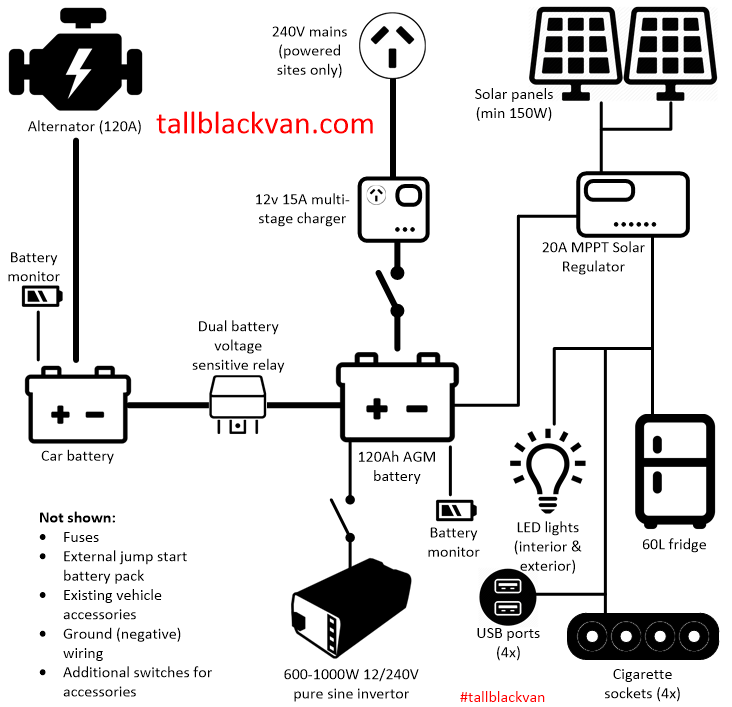One of the more interesting parts of this build (for me at least) is the electrical system I’ll be setting up. The end goal is to have a system self sufficient for around 3 or 4 days without the need for the engine to be turned over or external power to be connected. I’m not sure how successful we’ll be, but I think I’ve come up with the best solution I can given my budget. The major power consumer is the fridge, which is a luxury that I’ve been told is not a luxury, it is essential for the consumption and storage of white wine and cheese and therefore is absolutely non-negotiable in any way.

Because my job basically consists of creating Visio diagrams or writing notes on other peoples Visio diagrams, I’ve put together a basic layout for the key components in the electrical system. As a Visio diagram.

This is pretty much the same diagram as every other camper van or caravan or trailer that is looking to install a solar assisted ‘leisure’ battery for off-grid living. It’s pretty basic in terms of what you need – a power source, storage for that power, and a way of using that power. In our case, we will be able to use three types of power sources: the car itself, solar panels and 240V mains power when we have a powered site or we’re in a motel. All of these charge the deep cycle AGM battery. I’ve gone with a 130Ah battery which should give a few days worth of power for the fridge and some accessories without the need for another charge. If you’re considering this yourself, please don’t just buy a standard car battery to install in your van – get the extra money for a GEL or AGM battery. Standard car batteries release small quantities of a deadly gas and unless you put in vent holes for your battery enclosure, you risk dying in an embarrassing fashion.
Most of the components for this system has already been bought and are waiting for me to fit them once I start chopping up bits of plywood. Ebay’s been a great resource when searching for these items – paying for equivalent ARB or offroad retail stores would have cost an additional 50 to 200% more, often for the exact same component. Time will tell if the build quality will stand up for the eBay items, but I’ve only gone with items that get decent (non-paid) reviews.
Further updates to the electrical system will come as I work out the best placement of each item and actually start building the central platform in the van. If you’ve got a question about any of these items or which brand I eventually went with for each component, send us an email or hit us up in the comments below.
Be First to Comment